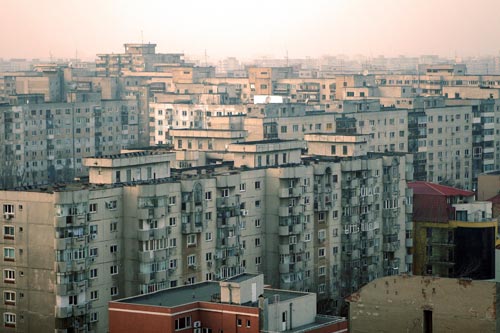 Romanian Government has announced that the funds from the state budget intended for the municipalities to bound the apartment blocks with seismic risk, will be cut in half in the next three years, even if the experts warned that the buildings could collapse in case of an earthquake.
Romanian Government has announced that the funds from the state budget intended for the municipalities to bound the apartment blocks with seismic risk, will be cut in half in the next three years, even if the experts warned that the buildings could collapse in case of an earthquake.
In five years, the money appropriated from the state budget for this case, has a few fluctuations from RON 7.8 million in 2008 and RON 5.8 million in 2010, to RON 8.1 million in 2012. This year it is estimated that will be spent RON 10 million to bind the apartment blocks.
The announcement reveals the fact that for the next three years the amount from the state budget will be cut in half to RON 4 million for 2014, RON 4.5 million in 2015 and RON 5 million for 2016.
Experts warned several times that many blocks, especially in Bucharest, are in great danger in case of a strong earthquake. According to the official lists with buildings of high risk, there are 112 included in class I of seismic risk, which are endangering the public. These buildings were built between 1900 and 1950 and other 260 buildings of which 60 were built in 1824-1898, are presenting high risk to collapse in case of an earthquake. From this list only 30 were bound in 1990.
In an official document written back in 2006, technical experts have warned the Government that the work to reduce the seismic risk of the existing buildings should be considered as being national interest because a potential earthquake like the one in 1977 or 1940 could produce high losses because of damage over time and could increase the number of buildings affected by earthquakes.
That document indicates that the list of buildings to be bound are listed about 3,000 buildings, of which 600 are classified as Class I seismic risk and the vulnerable buildings are located mainly in Bucharest, in the counties under the influence of seismic area from Vrancea, Banat and Fagaras.
At the end of 2011, a study presented by the Pool of Insurance Against Natural Disasters (PAID) warned that the losses resulting from an earthquake similar with the one in March 1977 could cause to the residential sector would reach EUR 4.8 billion, given that the total value of housing nationwide is estimated at EUR 105.6 billion.
The earthquake from March 4, 1977 had a magnitude of 7.2 on the Richter scale and caused losses of over USD two billion, meaning 5 % of GDP from that year, according to the World Bank data.
Of the total losses, 50% were apartments, in Bucharest 90% being victims and 70% losses. The quake caused the death of a number of 1,570 people to which were added 11,300 injured because of a collapse of 28 tall buildings.
-Access Romania Online-Ioana Toader
Images from the earthquake in 1977, Bucharest:










